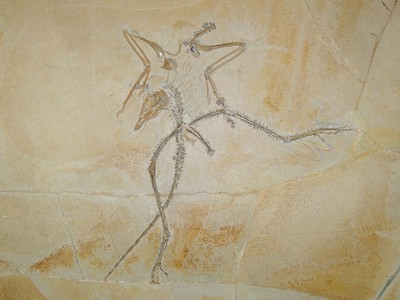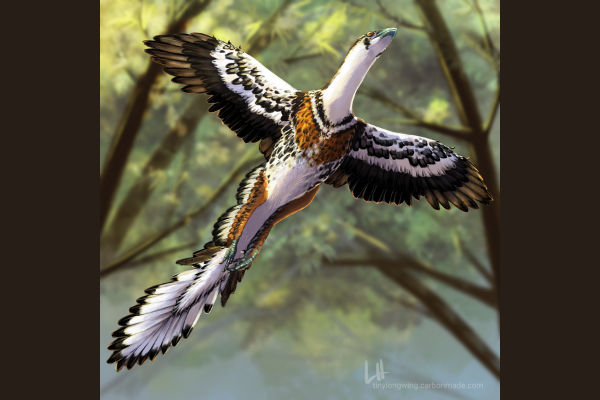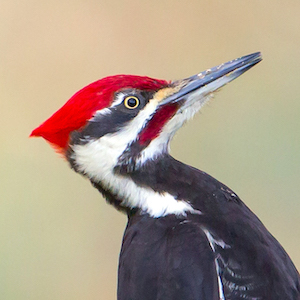Recently, scientists have been debating the evidence of molt in Archaeopteryx, a bird-like feathered dinosaur from the Jurassic period that has long been thought of as an ancestor of modern birds (though there is some debate as to whether this species was a direct ancestor). IBP biologist Peter Pyle is co-author on a paper published last week in Communications Biology (which is part of the prestigious journal Nature) that addresses the primaries in the Thermopolis specimen, a particularly complete and well preserved Archaeopteryx siemensii fossil found in Bavaria. The study, which was led by Yosef Kiat of the University of Haifa in Israel, was spurred by a paper published last year on molt in this specimen.

Image of a fossil Archaeopteryx Lithographica, taken on 2007-05-18 in the Staatliches Museum für Naturkunde in Karlsruhe, Germany. This is claimed to be the well-preserved Thermopolis Specimen. Wikimedia Commons (CC BY-SA 3.0).
How can looking for evidence of molt millions of years ago help us understand birds today? “For me the exciting thing about studying molt in feathered dinosaurs is that it will help us understand the evolution of molts; e.g., how molts started out in primitive species relative to how they are in birds today,” says Pyle. “This, of course, has bearing on how we apply molt and plumage terminology using the Humphrey-Parkes (H-P) nomenclature. I am especially interested in how the replacement sequence of wing feathers has evolved, as I discuss in a paper on molt in falcons and parrots. Whereas timing, location, and extents of molts are very plastic, easily shaped by environmental factors such as those related to migration, the sequence or order in which primaries and secondaries are replaced is mostly fixed evolutionarily.”
Determining the ways molt has changed, or remained the same, over the course of evolution will help us better understand this essential process in the life of birds. The 2020 paper asserted that the primaries of the Archaeopteryx were molting in a “center-out” sequence (bilaterally from a central primary), as based on assumptions about sheath order and growing feathers. But Kiat and co-authors argue that the specimen does not provide sufficient information to determine the molt sequence within this tract. Deciphering molt in the fossil record is tricky. “Fossil birds that give clues about molt are, understandably, very rare, since feathers, unlike bones, are constructed of soft tissue and don’t preserve as well,” continues Pyle.
“As most primitive and recent birds molt their primaries in a ‘distal’ sequence (from the innermost to outermost) rather than a center-out sequence, we would hypothesize that a distal sequence is basal, evolutionarily, and also shown by Archaeopteryx,” explains Pyle. Indeed, in a separate paper Kiat has shown that another feathered dinosaur, Microraptor, appears to have shown a distal sequence. The current paper thus argues that the fossil evidence is not clear enough to discount the null hypothesis, that Archaeopteryx replaced primaries distally rather than bilaterally.






